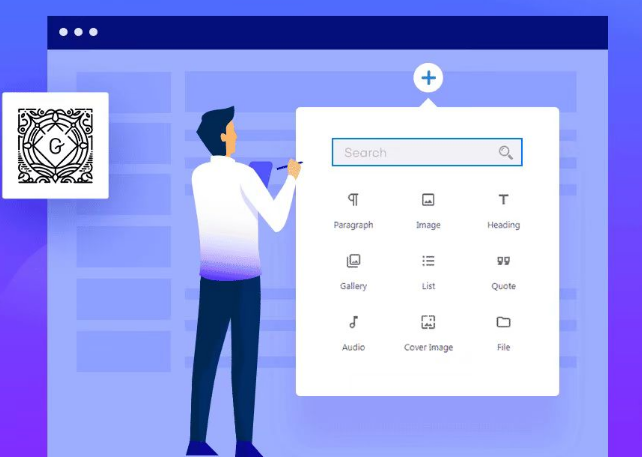![图片[1]-WordPress 用户权限系统详解及应用指南-光子波动网 | 专业WordPress修复服务,全球范围,快速响应](https://www.361sale.com/wp-content/uploads/2024/07/2024071910375133.png)
WordPress 的用户权限系统相对直观和灵活,允许管理员根据需求为用户分配不同的权限级别。无论你是管理一个简单的博客还是一个复杂的多用户网站,理解和有效管理用户权限都是至关重要的。本文将详细介绍 WordPress 中的各个用户角色及其权限,并提供一些管理和自定义用户权限的实用建议。
WordPress 用户角色及权限
1. 超级管理员 (Super Admin)
超级管理员角色通常只在多站点网络(Multisite)中存在。超级管理员拥有网络中的最高权限,能够管理整个网络的所有站点。具体权限包括:
- 管理网络中的所有站点,包括创建、编辑和删除站点。
- 管理网络中的所有用户,包括其他超级管理员。
- 拥有站点中所有其他用户角色的权限。
2. 管理员 (Administrator)
管理员是单一站点中权限最高的用户角色。管理员可以管理网站的所有方面,包括:
- 安装、激活、更新和删除主题和插件。
- 添加、编辑、删除用户,并为用户分配权限。
- 更改网站设置和选项。
- 发布、编辑和管理文章和页面。
- 管理网站的所有内容,包括媒体、评论等。
3. 编辑者 (Editor)
编辑者可以管理网站的内容,但没有管理网站设置或安装、删除主题和插件的权限。具体权限包括:
- 发布、编辑和管理文章和页面。
- 管理其他作者的文章和页面。
- 管理评论。
- 管理网站的媒体库。
4. 作者 (Author)
作者可以创建和管理自己的内容,但不能管理其他用户的内容或网站设置。具体权限包括:
- 撰写和编辑自己的文章。
- 发布和管理自己的文章。
- 上传和管理自己的媒体文件。
5. 贡献者 (Contributor)
贡献者可以撰写和编辑自己的文章,但不能发布。具体权限包括:
- 撰写和编辑自己的文章。
- 提交文章等待审核。
- 无法上传文件到媒体库。
- 需要由其他用户(如编辑者或管理员)审核并发布其文章。
6. 订阅者 (Subscriber)
订阅者权限最低,通常用于接收网站通知或邮件订阅。具体权限包括:
- 管理自己的个人资料。
- 无法发布、编辑文章或页面。
- 无法更改网站设置或安装、删除主题和插件。
自定义用户角色及权限
除了这些预设的用户角色外,WordPress 还允许通过插件或自定义代码来创建和管理自定义用户角色,以适应特定的权限需求。以下是两种方法:
使用插件自定义用户角色
- User Role Editor plug-in (software component) User Role Editor 是一款功能强大的插件,可以帮助你轻松地创建和管理自定义用户角色。安装并激活插件后,可以在“subscribers”菜单下找到“User Role Editor"Options.
- 添加新角色: click "Add Role”,输入角色名称和描述,然后设置该角色的权限。
- 编辑现有角色:选择要编辑的角色,勾选或取消勾选相应的权限,然后保存更改。
![图片[2]-WordPress 用户权限系统详解及应用指南-光子波动网 | 专业WordPress修复服务,全球范围,快速响应](https://www.361sale.com/wp-content/uploads/2024/07/2024071910400718.png)
- Members 插件 Members 插件同样是一款强大的工具,提供了更多的用户权限管理功能。可以使用它来创建新角色、编辑现有角色、设置内容访问权限等。
通过自定义代码创建用户角色
如果熟悉编程,可以使用自定义代码在 WordPress 中创建和管理用户角色。以下是一个示例代码,展示如何创建一个自定义角色:
function my_custom_role() {
add_role('custom_role', 'Custom Role', array(
'read' => true,
'edit_posts' => true,
'delete_posts' => false,
));
}
add_action('init', 'my_custom_role');
此代码将在 WordPress 中创建一个名为“Custom Role”的角色,具有读取和编辑文章的权限,但没有删除文章的权限。可以根据需要添加或移除权限。
管理用户角色及权限
在 WordPress 中管理用户角色和权限非常简单。通过“subscribers”菜单,可以添加新用户、编辑用户信息和为用户分配角色。以下是一些管理用户角色的实用技巧:
添加新用户
- 导航到“用户”菜单:登录 WordPress 后台,点击“用户”菜单。
- 点击“添加用户”:填写用户信息,包括用户名、电子邮件、密码等。
- 分配角色:在“角色”下拉菜单中选择合适的用户角色,然后点击“添加用户”。
![图片[3]-WordPress 用户权限系统详解及应用指南-光子波动网 | 专业WordPress修复服务,全球范围,快速响应](https://www.361sale.com/wp-content/uploads/2024/07/2024071910294977.png)
编辑用户信息
- 导航到“所有用户”:找到要编辑的用户,点击“compiler"Link.
![图片[4]-WordPress 用户权限系统详解及应用指南-光子波动网 | 专业WordPress修复服务,全球范围,快速响应](https://www.361sale.com/wp-content/uploads/2024/07/2024071910312113.png)
- 修改用户信息:可以更改用户的角色、姓名、电子邮件等信息。
- Save Changes: click "update a user" button to save the changes.
删除用户
- 导航到“所有用户”:找到要删除的用户,点击“删除”链接。
- Confirm deletion:系统会提示你确认删除用户,可以选择将用户的内容分配给其他用户。
utilization钩子(Hooks)和API控制用户权限
WordPress 提供了钩子(Hooks)和API,允许开发者通过编程方式更细致地控制用户权限。以下是一些常用的钩子和函数:
add_cap respond in singing remove_cap
这两个函数可以为特定角色添加或移除权限。例如:
function add_custom_capabilities() {
$role = get_role('editor');
$role->add_cap('edit_theme_options');
}
add_action('admin_init', 'add_custom_capabilities');current_user_can
此函数用于检查当前用户是否具有特定权限。例如:
if (current_user_can('edit_posts')) {
// 当前用户可以编辑文章
}reach a verdict
WordPress 的用户权限系统为网站管理员提供了强大的工具,允许他们根据需要为用户分配不同的权限级别。通过理解各个用户角色的权限,并学会如何使用插件或自定义代码来管理和扩展这些权限,可以确保你的网站安全、有效地运行。无论是简单的博客还是复杂的多用户网站,灵活的用户权限管理都是成功的关键。
Link to this article:https://www.361sale.com/en/14207The article is copyrighted and must be reproduced with attribution.
























![表情[xiaojiujie]-光子波动网 | 专业WordPress修复服务,全球范围,快速响应](https://www.361sale.com/wp-content/themes/zibll/img/smilies/xiaojiujie.gif)








No comments